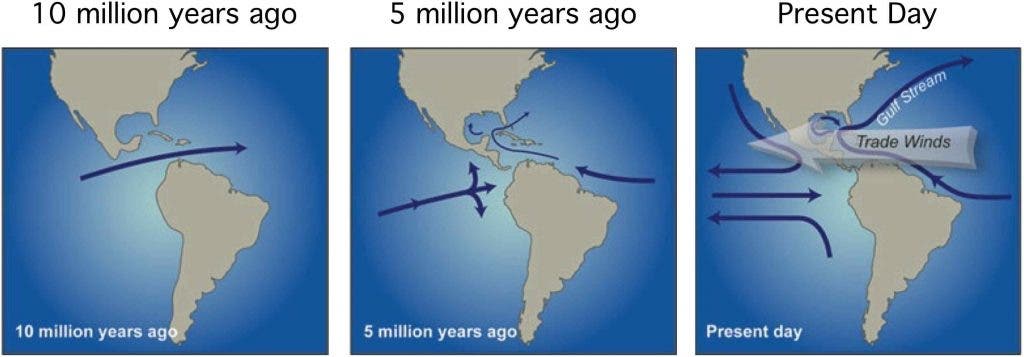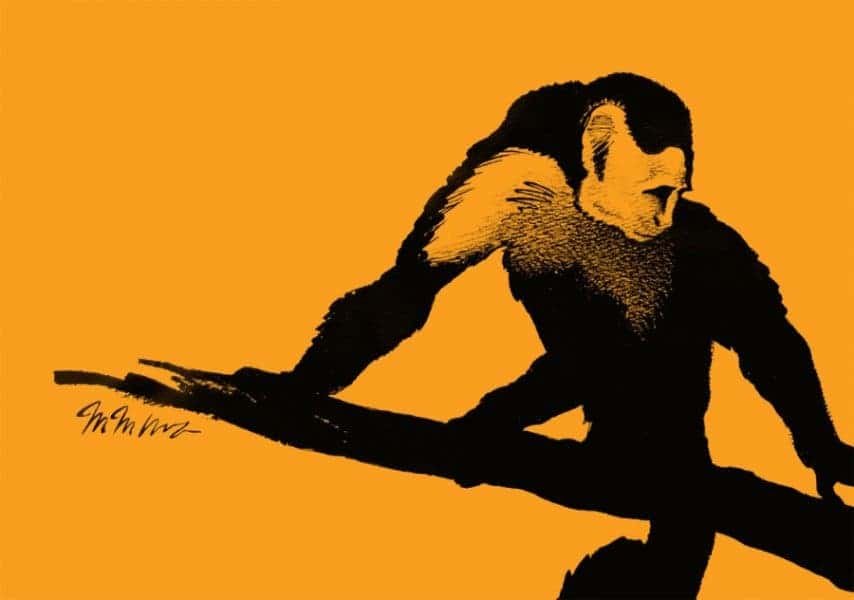About 21 million years ago, North and South America were separated by an ancient sea called the Miocene Central American Seaway, and the Atlantic and Pacific Oceans formed a single tropical ocean. This separation isolated species, except those who could fly or swim over long distances. Oddly enough, South American monkeys managed to cross this seaway and migrated all the way to North America by swimming. No one’s really sure how exactly they did this, but the discovery is definitely baffling.
“Somehow they made a transoceanic journey from Africa, then they dispersed throughout South America,” stated Jonathan Bloch, curator of vertebrate paleontology at the Florida Museum of Natural History. “Now we see that they, as far as we know, are the only mammal that successfully crossed the early Miocene Central American Seaway into present day Panama. So how were monkeys able to do this? Hopefully future fossil discoveries will help us better understand this extraordinary history.”
This pioneering voyage was reconstructed after researchers found seven 21-million-year-old fossilized teeth at Las Cascadas Formation, a volcanoclastic and tuffaceous sequence outcropping in the southern part of the Panama Canal. Some of these teeth belong to a new monkey species called Panamacebus transitus which closely resembled today’s capuchin. It was a pretty intense salvaging project, I might add, as researchers rushed in behind engineers as they dynamited the steep canal bank to expand it.
“I asked my boss for a million dollars to dig a hole in the ground,” said Carlos Jaramillo, staff scientist at the Smithsonian Tropical Research Institute (STRI). “Then the Panamanian people voted for the Panama Canal Authority to spend $5.6 billion dollars to expand the Canal and unlocked a treasure trove for us, containing this new monkey species and many other fossils.”

Credit: The Woods Hole Oceanographic Institute // Protons for Breakfast.
“We suggest that Panamacebus was related to the capuchin (also known as “organ-grinder” monkeys) and squirrel monkeys that are found in Central and South America today,” said Jonathan Bloch, curator of vertebrate paleontology at the Florida Museum of Natural History on the University of Florida campus and lead author on the study. “Prior to this discovery, New World monkeys were thought to have evolved in isolation on South America, cut-off from North America by a wide seaway.”
Previously, the earliest South American mammal fossil found in North America belonged to a giant sloth, date 9 million years old. The latest fossils shatter this record while also leaving an open question for other fossil hunters to answer: how on earth did these monkeys cross a sea?
A more logical explanation, the researchers reckon, is that some of these monkeys hitched a ride across floating lumber or mats of vegetation. In fact, most scientists agree that this method was used in the first place by ancient primates and monkeys to travel from Africa to South America 40 million years ago.
If these monkeys were so smart, why didn’t they travel farther North? Pollen might lend some clues. Around the time the monkeys first set foot in Panama, records show they should have found all the fruits, berries and food they likely were familiar in South America. Further north in Costa Rica and Nicaragua, they’d find forests and, well, not much chance for a fresh life in the New World.
“Getting there is just half the task. The other half is to establish yourself and survive,” says Alexandre Antonelli, an evolutionary biologist at the University of Gothenburg in Sweden who wasn’t involved in the research.
Reference: Jonathan I. Bloch, Emily D. Woodruff, Aaron R. Wood, Aldo F. Rincon, Arianna R. Harrington, Gary S. Morgan, David A. Foster, Camilo Montes, Carlos A. Jaramillo, Nathan A. Jud, Douglas S. Jones, Bruce J. MacFadden. First North American fossil monkey and early Miocene tropical biotic interchange. Nature, 2016; DOI: 10.1038/nature17415










